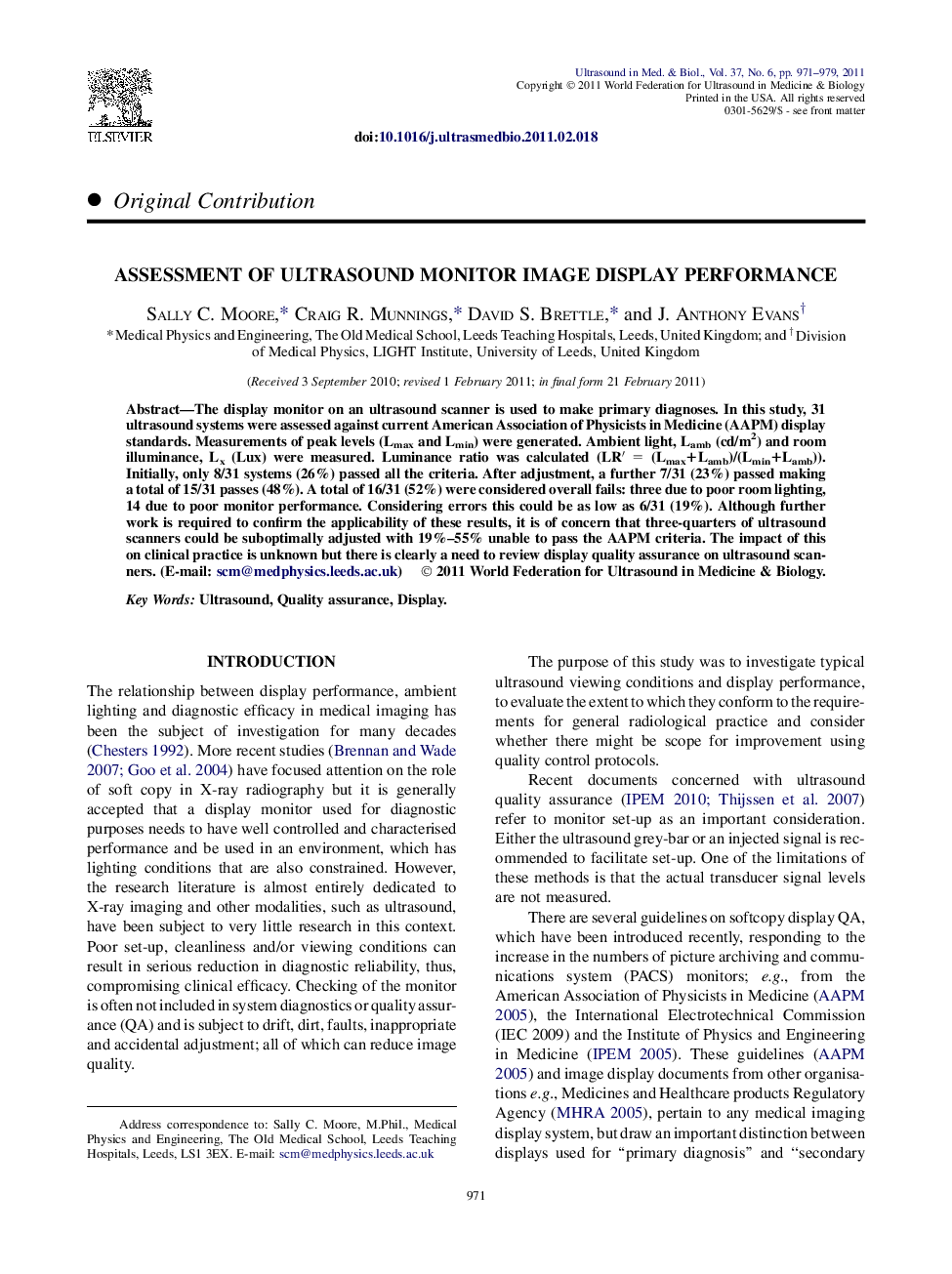| Article ID | Journal | Published Year | Pages | File Type |
|---|---|---|---|---|
| 1761173 | Ultrasound in Medicine & Biology | 2011 | 9 Pages |
Abstract
The display monitor on an ultrasound scanner is used to make primary diagnoses. In this study, 31 ultrasound systems were assessed against current American Association of Physicists in Medicine (AAPM) display standards. Measurements of peak levels (Lmax and Lmin) were generated. Ambient light, Lamb (cd/m2) and room illuminance, Lx (Lux) were measured. Luminance ratio was calculated (LRâ² = (Lmax+Lamb)/(Lmin+Lamb)). Initially, only 8/31 systems (26%) passed all the criteria. After adjustment, a further 7/31 (23%) passed making a total of 15/31 passes (48%). A total of 16/31 (52%) were considered overall fails: three due to poor room lighting, 14 due to poor monitor performance. Considering errors this could be as low as 6/31 (19%). Although further work is required to confirm the applicability of these results, it is of concern that three-quarters of ultrasound scanners could be suboptimally adjusted with 19%-55% unable to pass the AAPM criteria. The impact of this on clinical practice is unknown but there is clearly a need to review display quality assurance on ultrasound scanners.
Keywords
Related Topics
Physical Sciences and Engineering
Physics and Astronomy
Acoustics and Ultrasonics
Authors
Sally C. Moore, Craig R. Munnings, David S. Brettle, J. Anthony Evans,
